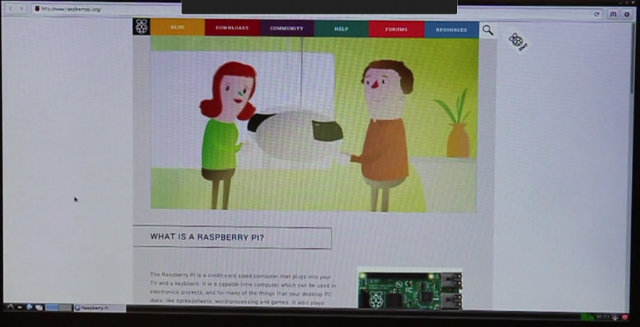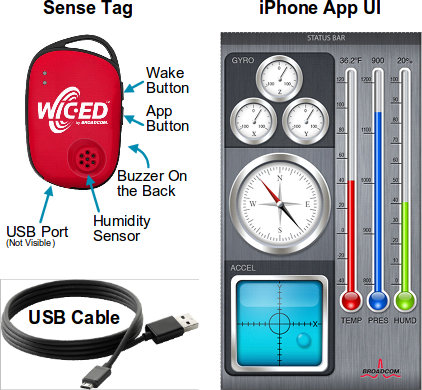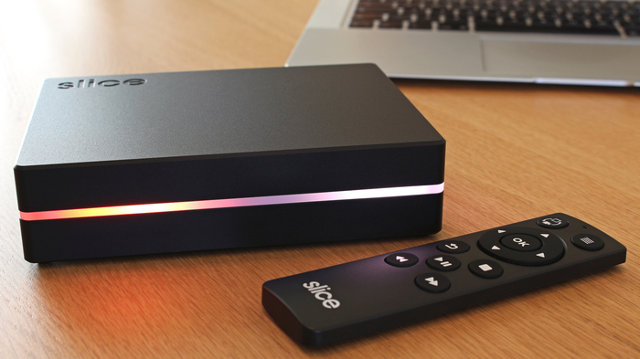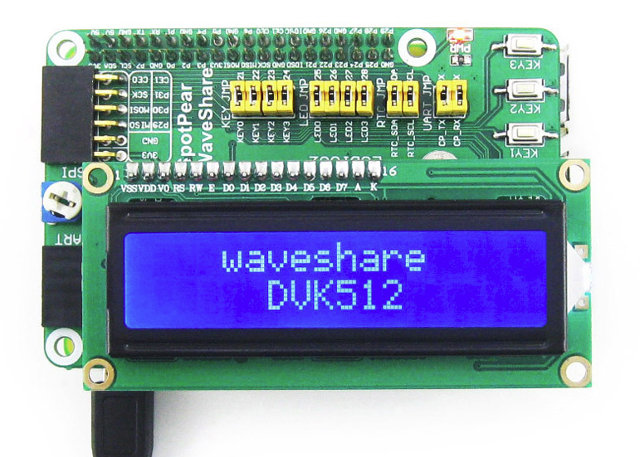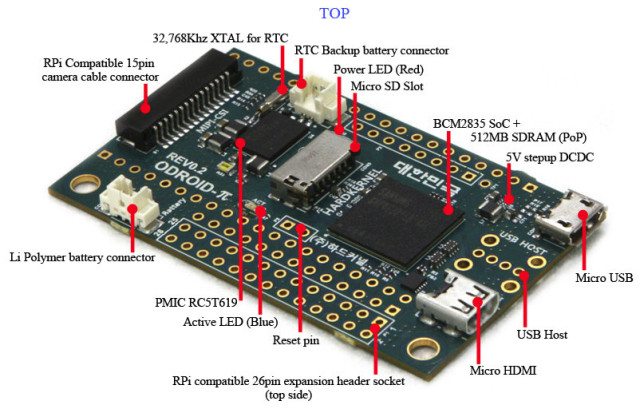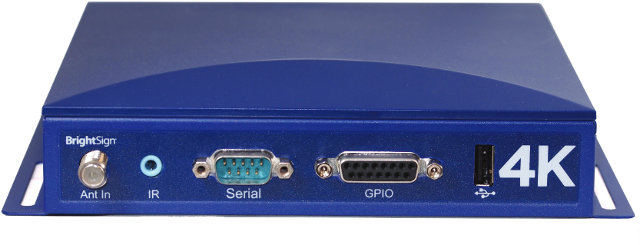If you’ve ever tried to use a Raspberry Pi to browse the web, you must have noticed how frustrating it can be due to the overall sluggishness of the system. But thanks to work by Collaborra, which optimized Epiphany Web browser for the Raspberry Pi, bringing features such as 720p HTML5 hardware video decoding (no flash support), faster loading and scrolling, etc.., the web browsing experience has much improved, although as you’ll see from the video below, it’s still not quite 100% perfect. The key modifications brought to Epiphany Web browser are listed below: More responsive UI and scrolling, even while loading a page Progressive tiled rendering for smoother scrolling Startup is three times faster Avoid useless image format conversions Better YouTube support, including on-demand load of embedded YouTube videos to make page load much faster Hardware decoding and scaling of videos (through gst-omx) Reduction of the number of memory […]
Broadcom Introduces WICED Sense Bluetooth Low Energy Development Kit
Broadcom has recently announced a new development board for IoT applications using Bluetooth Low Energy (BLE) called WICED Sense. The kit consists of a “sense tag” powered by the company’s BCM20737S Bluetooth SIP Module with five micro-electromechanical sensors (MEMS), and Bluetooth 4.1 compatible WICED SMART software stack. The key features of WICED Sense devkit are as follows: Broadcom BCM20737 Bluetooth Smart system in package (SiP) module Five low-power MEMS sensors by ST Micro (part of the module): Gyroscope (L3GD20) Accelerometer (LIS3DSH) eCompass (LSM303D) Pressure sensor (LPS25H) Humidity Temperature sensor (HTS221) Bluetooth Smart connection covers distance of roughly 30 meters. USB – 1x micro USB connector to update applications Encryption, decryption, certificate signing, verification and various algorithms for increased privacy Secure Over-the-air (OTA) download capability to enable firmware updates from central device including smartphone, tablet and computers Misc – iBeacon, NFC, Wireless charging (Rezence A4WP) support. Power – Coin-cell battery The […]
Raspberry Pi Based Slice, and EzeeCube Quad Media Players Support Internal Hard Drives (Crowdfunding)
Slice is a media player based on Raspberry Pi Compute Module, and EzeeCube Quad is media hub powered by Freescale i.MX6 Quad, and an upgrade to EzeeCube based on i.MX6 dual, which was successfully funded. The underlying hardware between Slice and EzeeCube is much different, but both devices have a lot in common. They are both media players currently being crowd-funded respectively in Kickstarter and Indiegogo, both comes with an internal hard drive, run XBMC, targets typical end-users (rather than tinkerers) and are somewhat pricey. Slice Media Player When I first saw Slice, all I could see was an Raspberry Pi module, put in a case with an internal hard drive bay, and lots of pretty RGB LEDs, and with an air mouse sold for an inflated price of 114 GBP ($190 US) without hard drive or 179 GBP ($300 US) with a 1TB drive, with admittedly some cheaper early […]
Waveshare DVK512 Kits For Raspberry Pi Model B+ Include RTC, Sensors, LCD Display, and More
Beaglebone (Black) expansion boards are called capes, Minnowboard ones are lures, and Raspberry Pi model B+ add-on boards can be HATs (HArdware on Top). When I found a kit for the Raspberry Pi model B+ on DealExtreme, based on Waveshare DVK512 add-ons board I thought it might have found a Chinese HAT, but unfortunately it is not compliant with HAT board specifications as it misses an EEPROM,and the dimensions are not the correct one either. Nevertheless, the kit, as well as extra accessories such as a 3.2″ LCD display, can still be interesting. The kit on DX comes with the following items: DVK512 expansion board that connects to the 40-pin Raspberry Pi B+ header and features PCF8563 RTC chip with battery, an on-board USB to TTL chip for debugging via micro USB, a character LCD interface, connectors for modules connected via UART, SPIO, I2C or GPIO, various jumpers and user […]
Linaro 14.07 Release with Linux Kernel 3.16 and Android 4.4
Linaro 14.07 has just been released with Linux Kernel 3.16-rc6 (baseline), Linux Kernel 3.10.50 (LSK), and Android 4.4.4. This month, Linaro has continued development on Juno 64-bit ARM development board, as well as other member boards from Broadcom (Capri), Qualcomm (IFC6410), Hisilicon D01, Samsung (Arndale / Arndale Octa), etc.. Android have been upgraded to version 4.4.4 with images released for Pandaboard, Arndale, Nexus 10, and Nexus 7, built with Linaro GCC 4.9. Here are the highlights of this release: Linux Linaro 3.16-rc6-2014.07 released GATOR version 5.18 (same version as in 2014.04) updated basic Capri board support from Broadcom LT. Good progress in upstreaming the code: now the topic has 21 patch on top of v3.16-rc4 vs 53 patches on top of v3.15 in 2014.06 cycle removed cortex-strings-arm64 topic as the code is accepted into the mainline new topic from Qualcomm LT to add IFC6410 board support updated Versatile Express ARM64 […]
Hardkernel Unveils $30 Raspberry Pi Compatible Module with RTC, ADC, and LiPo Battery Support
Hardkernel is better know for its ODROID boards powered by Samsung Exynos SoC. So I was surprised to discover ODROID-W, “a miniature computing module which is fully compatible with all software available for the Raspberry-Pi”. Software compatible, really? Yes, because they used the same Broadcom BCM2835 SoC found in the Raspberry Pi, packaged it in a smaller form factor, while keeping HDMI, USB, and CSI interface, and expansion headers, and all that for $30, plus just $9 for shipping. Let’s go through ODROID-W specifications first: SoC – Broadcom BCM2835 ARM1176JZ-F processor @ 700 Mhz with VideoCore IV GPU System Memory – 512MB LPDDR2 (Samsung K4P4G324EB PoP) Storage – microSD slot + eMMC socket (bottom of the board) Video Output – micro HDMI (with NXP IP4791CZ12 protection IC) USB – micro USB connector, and USB host (not soldered) Expansion Headers: R-Pi compatible 26-pin expansion header (through holes) R-Pi compatible 15-pin CSI […]
Linux 3.15 Released
Linus Torvalds announced the release of Linux Kernel 3.15 last Sunday: So I ended up doing an rc8 because I was a bit worried about some last-minute dcache fixes, but it turns out that nobody seemed to even notice those. We did have other issues during the week, though, so it was just as well. The futex fixes and cleanups may stand out, but as usual there’s various other random fixes since rc8 in there too: mainly drivers (drm, networking, sound, usb etc), networking, scheduling and perf tooling. But it’s all been fairly small and quiet, which *may* of course be due to the fact that last week was also the first week of the merge window for 3.16. That might have distracted some developers. I’m not entirely convinced I liked the overlap, but it seemed to work ok, and unless people scream really loudly (“Please don’t _ever_ do that again”) and give good […]
BrightSign 4K Digital Signage Player Delivers 4K 10-bit HEVC Video Playback at 60 fps via HDMI 2.0
When you buy a media player advertized as supporting 4K (aka 2160p, 4K2K, or UHD), you have to read the fine print to find out what you really get. First on the market were media players capable of decoding 4K videos put outputting to 1080p60 maximum such as Mele M9, then we’ve been shown some media players such as Geniatech ATV1800, decoding 4K video using 2160p resolution (3840×2160) as expected, but with a framerate limited to 24 fps or 30 fps due to limitation of HDMI 1.4. However, if you want to experience 4K video with the maximum framerate (60 fps) or “True 4K”, you’ll need a player and a TV support HDMI 2.0 standard. There are not many players currently supporting 4K @ 60fps, but BrightSign 4K digital signage media player is one of them, and it also happens to support HEVC/H.265 video codec. The company did not disclose […]


